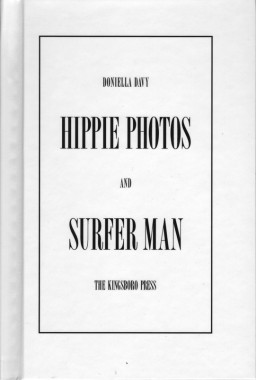
Doniella Davy, Hippie Photos and Surfer Man
Hardcover, 48 pp., digital 4/1, 6.25 x 9.25 inches
Edition of 250
Published by The Kingsboro Press
$15.00 ·
Simply hilarious. Through her voyeuristic lens, photographer Doniella Davy tells a story of 2 “hippies” interacting with each other and how a surfer spends his time at the beach (besides surfing, of course).
Art, Culture, Distribution, Doniella Davy, Photography, The Kingsboro Press
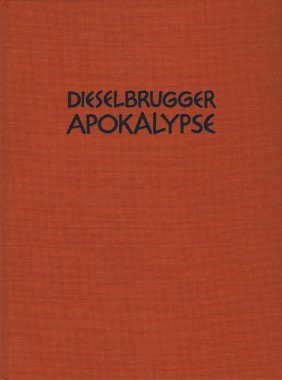
Emanuel Halpern, Dieselbrugger Apokalypse
Hardcover, 80 pp., offset 4/4, 220 x 297 mm
English and German
Edition of 1000
ISBN 978-3-905714-89-0
Published by Nieves
$46.00 ·
When someone as peaceful as Emanuel Halpern (Zurich, 1948) draws an apocalypse, things must be pretty bad with the world. His fifty large-scale coloured pencil drawings telling the story of the destruction of Dieselbrugg confirm this prediction. This is his comic version of Dürrenmatt‘s valley of confusion. Reality, which is usually slouching towards tragedy, can be described only by comic means. Both talented storytellers subscribe to this truism. They give us solid citizens with image and text collages that are almost excessively artistic and hypertrophic. But the images underline the fact that this is the only way that we can tackle and escape from the mess.
In the Dieselbrugger Apokalypse, Halpern manages to move between pilgrimage and the misery of refugees with the sure-footedness of a somnambulist. “You can‘t really be as dozy as that” he seems to be muttering. “Come into my yurt In here you will hear peace bells ringing, you‘ll see bathing towels fluttering. This is Dieselbrugg.”
— Guido Magnaguagno
Art, Distribution, Emanuel Halpern, Guido Magnaguagno, Illustration, Nieves, Paul Knight, Rafael Newman, Zuni Halpern
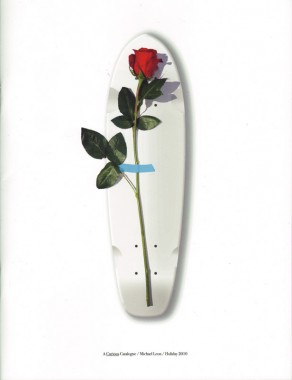
Michael Leon, A Curious Catalogue
Softcover, 28 pp., offset 4/4, 195 x 255 mm
Edition of 1000
ISBN 978-3-905714-92-0
Published by Nieves
$16.00 ·
A Curious Catalogue is a skateboard product catalogue of pencil drawn anti-graphics, spin-art wheels, and slalom gemstones. It was designed to take a romantic and fantastic vision of a skateboard company and make it ‘real’. Michael Leon was inspired by the naïve wonder he experienced as a young skateboarder, which he juxtaposes with an elegant, yet dry, catalogue sales format. The result is a carefree and poetic narrative carried by a range of imagined products.
Michael Leon was raised in late 80s, early 90s skateboard culture. His work lives in a unique place between the worlds of art and art direction. He often uses the language of graphic design to create meaning through sculpture, paintings, videos, and editions. While still in high school, Michael designed his first pro model skateboard for New Deal Skateboards. 19 years later, he continues to design for his skateboard company Stacks, as well as creating artwork and art directing collaborative projects.
Dave Vander Maas, Design, Distribution, Graphics, Michael Leon, New Deal Skateboards, Nieves, Sport, Stacks, Thomas Erber
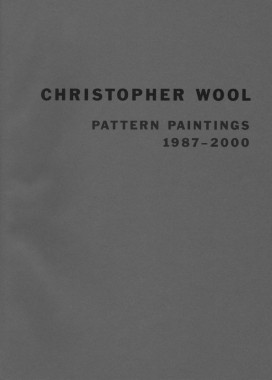
Christopher Wool, Pattern Paintings 1987-2000
Softcover, 48 pp., offset 2/1 duotone, 210 x 297 mm
Edition of 1000
ISBN 978-0-970909-07-7
Published by Luhring Augustine/Skarstedt Gallery
$25.00 · out of stock
Published on the occasion of Christopher Wool’s exhibition at New York’s Skarstedt Gallery, this concise collection of 17 black-and-white pattern paintings made between 1987 and 2000, set alongside 10 installation shots, serves as historic documentation of works that have rarely been shown or published, but which remain perennially influential. Born in Chicago in 1955, Wool came to prominence in New York in the 1980s with his graffiti-like text paintings, which are full of slang, song lyrics and action painting drips. Loved and loathed by critics, Wool has been described by the Village Voice’s Jerry Saltz as, “a very pure version of something dissonant and poignant. His all-or-nothing, caustic-cerebral, ambivalent-belligerent gambit is riveting and even a little thrilling. It’s what makes him one of the more optically alive painters out there.”
Art, Christopher Wool, DAP, Hans Werner Holzwarth, Jerry Saltz, Larry Lamay, Luhring Augustine, Skarstedt Gallery
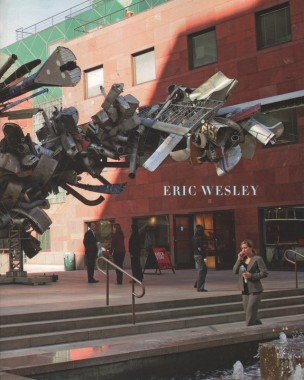
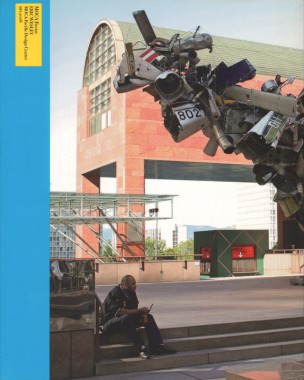
Eric Wesley, Eric Wesley
Softcover, 60 pp., offset 4/4, 8 x 10 inches
Edition of 2000
ISBN 978-0-914357-97-1
Published by MOCA
$25.00 · out of stock
West Coast artist Eric Wesley was born in 1973 in Los Angeles. His work, which can take the form of sculpture, painting, drawing, architectural model or public artwork proposal, often uses decrepit materials and conveys a humorous take on the world and his own identity within it. For the Whitney Biennial, he created scale sets for a faux reality show; his kinetic sculpture Kicking Ass was a mechanized donkey that kicked holes in the gallery wall behind it. This small monograph is the first publication dedicated solely to the artist’s work, and is published on the occasion of his exhibition as part of the MOCA Focus series.
Art, Cornelia Butler, DAP, Elizabeth Hamilton, Eric Wesley, Jane Hyun, Lisa Mark, Michael Worthington, MOCA, Sculpture, Yasmin Khan
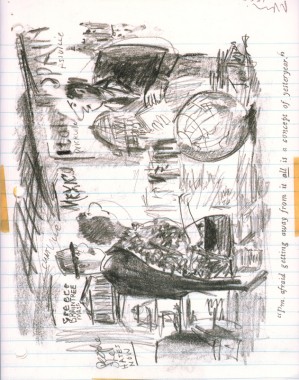
Richard Prince, Jokes & Cartoons
Softcover, 216 pp., offset 4/1, 218 x 280 mm
Edition of 2000
ISBN 978-3-905701-83-8
Published by JRP|Ringier
$35.00 ·
Conceived by the artist, this book gathers together the raw material to his “Joke Paintings” for the first time: unpublished manuscripts, well-known as well as unshown works from his personal collection, cartoons, and jokes. The project comments as much on the perception of his own work through the filter of a devaluated form of humor, as on the popular material appropriated through it.
“Jokes and cartoons are part of any mainstream magazine. Especially magazines like the New Yorker or Playboy. They’re right up there with the editorial and advertisements and table of contents and letters to the editors. They’re part of the layout, part of the “sights” and “gags.” Sometimes they’re political, sometimes they just make fun of everyday life. Once in awhile they drive people to protest and storm foreign embassies and kill people.”
— Richard Prince
Art, Beatrix Ruf, Culture, DAP, Ines Hany, JRP|Ringier, Richard Prince
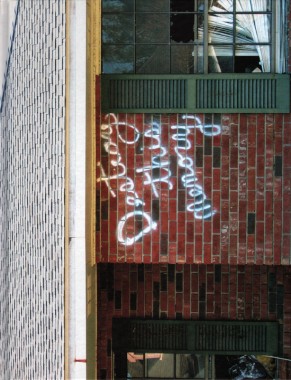
Richard Misrach, Destroy This Memory
Hardcover, 140 pp., offset 4/4, 11.75 x 15.25 inches
Edition of 2000
ISBN 978-15971116-3-8
Published by Aperture
$65.00 ·
Richard Misrach’s
Destroy This Memory is an affecting reminder of the physical and psychological impact of Hurricane Katrina. Rather than simply surveying the damage, Misrach — who has photographed the region regularly since the 1970s, most notably for his ongoing
Cancer Alley project — found himself drawn to the hurricane-inspired graffiti: messages scrawled in spray paint, crayons, chalk, or whatever materials happened to be on hand. At turns threatening, desperate, clinical, and even darkly humorous, the phrases he captured — the only text that appears in the book — offer unique and revealing human perspectives on the devastation and shock left in the wake of this disaster.
Destroy This Memory presents previously unpublished and starkly compelling material, all of which Misrach shot with his 4 MP pocket camera. Created between October and December 2005, this haunting series of images serves as a potent, unalloyed document of the raw experiences of those left to fend for themselves in the aftermath of Katrina.
Aperture, Art, Cancer Alley, Criticism, DAP, Katrina, New Orleans, Photography, Politics, Richard Misrach
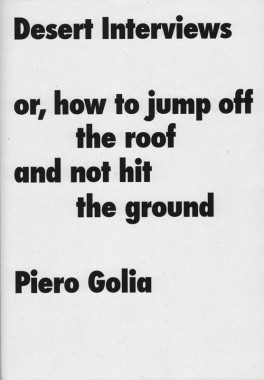
Piero Golia, Desert Interviews or, how to jump off the roof and not hit the ground
Softcover, 100 pp., offset 4/1, 148 x 210 mm
Edition of 2000
ISBN 978-3-03764-106-4
Published by JRP|Ringier
$28.00 ·
Piero Golia founded in 2005, with his long-time friend Eric Wesley, the Mountain School of Arts, an educational structure that rapidly became a new spot on the cultural map of the city of Los Angeles.
This book, composed of discussions between artists, presents a kind of report on this unique “institution:” teaching methods, academic syllabus, and students’ selection are here explained with metaphors, compared with artistic interaction, and equaled to performances. Not unlike Golia’s work itself, the development of the school and its program follow a poetic of the gesture, of the instant, and of actions recalling Fluxus, Gino de Dominicis’ or Paul McCarthy’s works.
As a career’s start, Piero Golia successfully convinced a woman to have his portrait and the words “Piero My Idol” tattooed on her back (tattoo, 2001); soon after, following an invitation to the Tirana Biennale, he rowed across the Adriatic Sea in the opposite direction to migratory movement to reach Albania (”Going to Tirana,” 2000). And, on January 14, 2005, Golia vanished from New York City leaving no documented proof of his whereabouts; he traveled from a place to another, crossing borders without a trace, for resurfacing only on the morning of February 7 at the Royal Academy of Arts in Copenhagen for a unique lecture about his adventurous trip. He now lives in Los Angeles, a place that blurs the boundaries between reality and fiction, making it the perfect setting for his exploration into the process of myth-making and his ironic outlook on contemporary society.
Andrew Berardini, Art, DAP, Education, Emilie Renard, Eric Wesley, Fluxus, Gino de Dominicis, John Armleder, JRP|Ringier, Lisa Mark, Los Angeles, Mountain School of Arts, Paul McCarthy, Piero Golia, Pierre Huyghe, Richard Jackson, Royal Academy of Arts in Copenhagen, Tirana Biennale
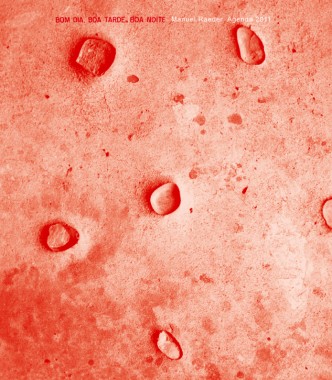
Manuel Raeder, Bom Dia, Boa Tarde, Boa Noite (
Manuel Raeder Agenda 2011)
Softcover, 128 pp. + 4/1 insert, offset 1/1, 140 x 160 mm
Edition of 1000
Agenda/calendar/notebook 2011
Published by Manuel Raeder
$29.00 ·
Agendas are an ongoing project that Manuel Raeder has been doing since 2003. The idea of this series of time storage devices, is to focus on questioning different methods of how we organize, in a personal or none personal way our time. Formats, sizes and distributions systems vary each year.
A whole year compiled in one book, with the following contributions: Manuel Raeder (January), Carla Zaccagnini (February), Mariana Castillo Deball (March), Daniel Steegmann (April), Manuel Raeder (May), Eran Schaerf (June), Bojan Sarcevic (July), Manuel Raeder (August), Rodolfo Samperio (September), Amanda Haas (October), Amalia Pica (November), Adriana Lara (December), Manuel Goller (January).
Adriana Lara, Agenda, Amalia Pica, Amanda Haas, Art, Bojan Sarcevic, Carla Zaccagnini, Daniel Steegmann, Distribution, Eran Schaerf, Manuel Goller, Manuel Raeder, Mariana Castillo Deball, Rodolfo Samperio
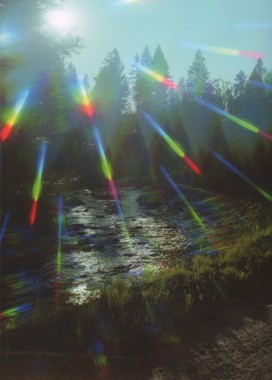
Ron Jude, Emmett
Softcover, 80 pp., offset 4/4, 6.75 x 9.5 mm
Edition of 1000
ISBN 978-0-9823653-2-8
Published by The Ice Plant
$30.00 ·
The past did not exist. Not at all.
—Jean-Paul Sartre
Jude’s latest book project, Emmett, brings new life to a selection of his own early photographs, made in the early 1980s in central Idaho. Enhanced by special-effects filters and cheap telephoto lenses, the pictures include hazy scenes of a summertime drag race, a forest across changing seasons, midnight horror films on TV and a Nordic-looking teenager who appears as a specter from the artist’s past. Edited here nearly 30 years after its making, this experimental body of work acquires unexpected nuance and humor, and has the serendipitous qualities of a dream –memories reorganized into a fictionalized narrative, imagery suffused with both an unsettling melancholy and the glow of youthful reverie. Related conceptually to and residing thematically between his two previous books — Alpine Star and Other Nature — Emmett achieves an aesthetic inspired by equal parts Motörhead and Jean-Paul Sartre.
Art, DAP, Jean-Paul Sartre, Motörhead, Photography, Pink Floyd, Ron Jude, The Ice Plant
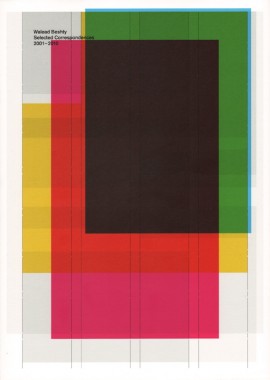
Walead Beshty, Selected Correspondences 2001-2010
Softcover, 128 pp., offset 4/1, 210 x 297 mm
Edition of 2000
ISBN 978-88-6208-135-1
Published by Damiani
$49.00 ·
In 2001, Walead Beshty began documenting the Diplomatic Mission of the Republic of Iraq to the former German Democratic Republic in Berlin. Still protected as sovereign territory under the Vienna Conventions, the embassy has stood abandoned since the early 1990s as, in Beshty’s words, “a relic of two bygone regimes, unclaimable by any nation; a physical location marooned (by) symbolic shifts in global politics, a ruin set apart neitherby fences nor by millennia, but by the invisible and abstract mechanisms of international law”. The site inspired his ongoing engagement with the invisible and marginal territories of globalization which provide an important line through his photographic and sculptural work of the past decade. Selected Correspondences focuses on three bodies of photographic work — two that deal with the Embassy directly and a third, Transparencies, which continues the question of place and movement. The work has been exhibited at the Hammer Museum in Los Angeles, Tate Britain, London, and the Whitney Museum of American Art in New York, among others, and is brought together here for the first time, accompanied by two new essays on the projects.
Art, Criticism, Damiani, DAP, Eric Schwab, Hammer Museum, Iraq, Jason Smith, Peter Eleey, Photography, Tate Museum, Walead Beshty, Whitney Museum, Writings
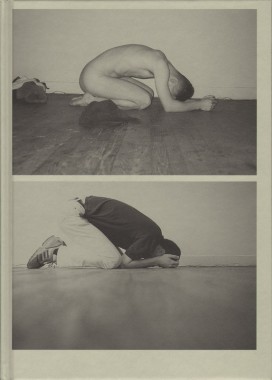
Wolfgang Tillmans, Wolfgang Tillmans
Hardcover, 80 pp., offset 1/1, 218 x 305 mm
Edition of 2000
ISBN 978-3-905829-36-5
Published by JRP|Ringier
$35.00 · out of stock
This publication is a reprint of the first book realized by Wolfgang Tillmans in 1995. A very atmospheric, if measured, compilation of black and white images, it combines portraits of youth culture with landscape, city scenes with slogans, clippings from newspapers, and book illustrations. Released now into a different context from its first appearance, the book is emblematic of the new approach and the energy Tillmans has developed since the end of the 1980s to the present in terms of genres, quality, and the status of photography as a medium.
Andrea Rosen, Art, DAP, Galerie Daniel Buchholz, JRP|Ringier, Kunsthalle Zürich, Nicola von Senger, Photography, Wolfgang Tillmans
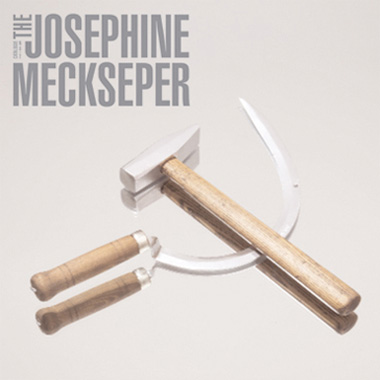
Josephine Meckseper, The Josephine Meckseper Catalogue No. 2
Softcover, 48 pp., offset 4/4, 240 x 240 mm
English and German
Edition of 1000
ISBN: 1-933128-14-3
Published by Sternberg Press
$24.00 ·
“Politics and aesthetics morph seamlessly in a world where politics confuses itself with representation, where all attention is swallowed in the communication of a message rather than in the intensity of an event. … In Meckseper’s gallery installation, where fashion images share space with protest documentation, where an idea of relational space rubs shoulders with an idea of lifestyle or boutique design, where an idea of the social morphs into an idea of the commodity relation, many of the elements on display also double as mechanisms of display: shelves, rugs, windows, magazine covers, and wallpaper are the products here. Here, display displays itself. Covers and wrappings conceal nothing, they only reveal themselves. And, reappropriating the very mechanisms of commodity transmission in this way, and in particular by conflating politicized symbols with such functions … , by relocating non-art in art and vice versa, by this orgiastic displacement, this diabolical Feng Shui of signifying forms and materials, the artist also goes to work (like the peasant in her field, the posing model) in the production of her anti-world.”
—John Kelsey
Art, Elizabeth Dee, Fashion, Josephine Meckseper, RAM, Sternberg Press, Sylvere Lotringer













